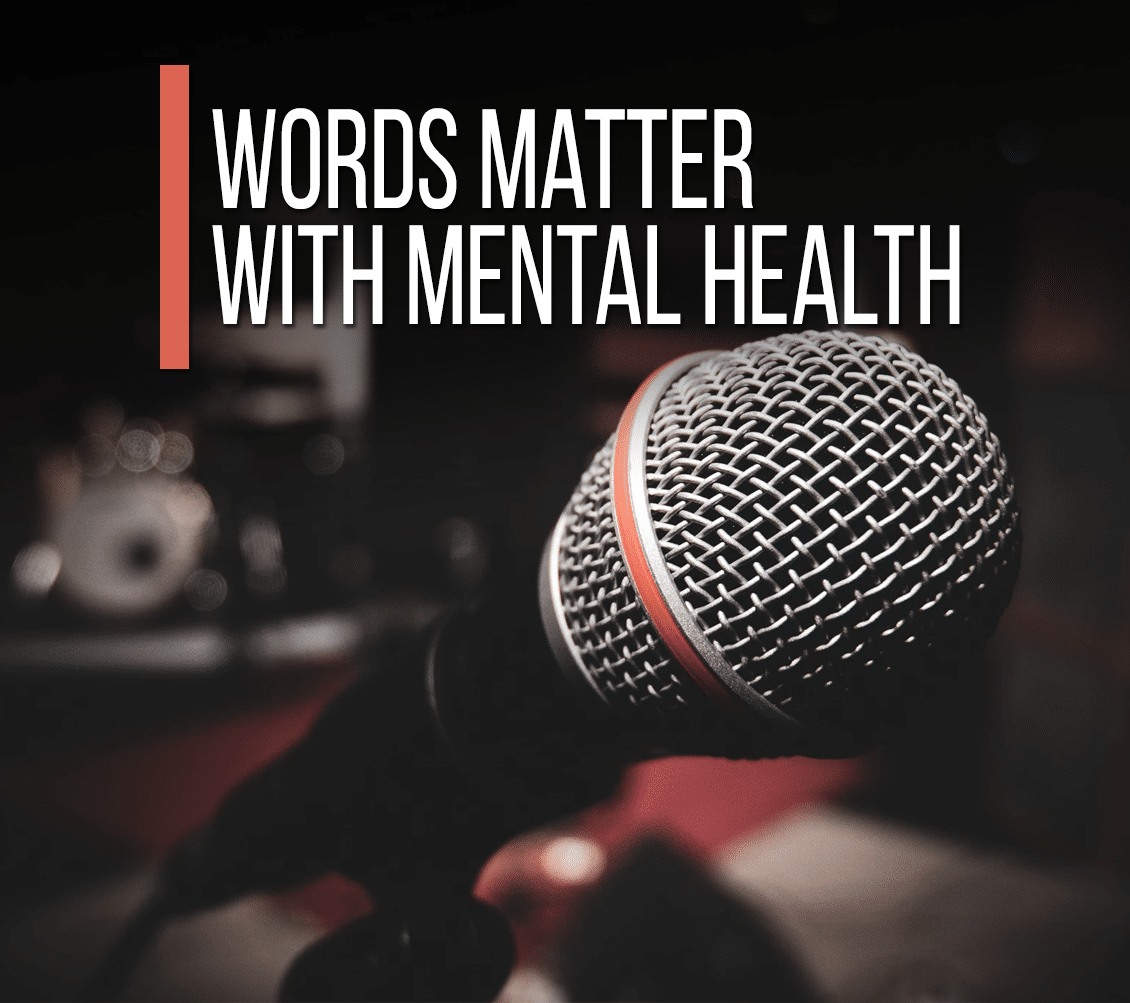This is not about being politically correct. This is about treating people wholely, beyond any mental illness, impairment, or delay. We need to recognize that words matter.
Words matter with mental illness. Words matter with developmental disabilities. Words matter with substance misuse.
Why Does This Matter?
Stigma is one of the biggest barriers to anyone with mental illness or substance misuse who need to begin their recovery with treatment. Imagine that. It’s not money, it’s not access to insurance or quality care. It’s because friends, family, and culture continue to make people who struggle with problems not feel comfortable with themselves to go get help.
Could you imagine me making fun of you for getting a divorce, breaking an arm, or losing a loved one? Why is it okay it intentionally, or more likely unintentionally, hurt others with our words. (We actually talk about this shame on a previous article)
The terminology used to describe substance misuse and mental health has contributed to the stigma. Many derogatory, stigmatizing terms were championed throughout the “War on Drugs” in an effort to dissuade people from misusing substances. We use works in jest like “she’s so crazy” or with hyperbole such as “my OCD is kicking in.”
By choosing language that is not stigmatizing, we can begin to dismantle the negative stereotype associated with what it is we need to treat. Changing attitudes of stigma will benefit everyone. It will allow patients to more easily regain their self-esteem, allow lawmakers to appropriate funding, allow doctors to treat without disapproval of their peers, allow insurers to cover treatment, and help the public understand this is a medical condition as real as any other. Choosing the words we use more carefully is one way we can all make a difference and help decrease the stigma.
“We should acknowledge that the childhood adage ‘sticks and stones can break my bones, but words can never hurt me,’ is patently untrue. Words, and the meanings with which they are imbued can achieve accuracy and relevance or they can transmit dangerous stereotypes and half-truths. They can empower or disempower, humanize or objectify, engender compassion or elicit malignant fear and hatred. Words can inspire us or deflate us, comfort us or wound us. They can bring us together or render us enemies.”
William White
People-First Language
What we are trying to push is that we need to not minimize the impact disorders and delays have on people. Further, we need to understand that the disorders themselves do not define the person.
If someone gets put on probation for a crime they commit, they have a felony or misdemeanor. But to label them ask a criminal instead of identifying them as a person first dehumanizes them. They are more than their legal status.
Let me take another one, one that led me personally to regularly use people-first language. I was in youth ministry prior to counseling, leading a ministry for middle schoolers. One of the people who I regularly had at activities has autism. One day, on a regular visit to the middle school to promote the activity, the kid began being mocked for his disability. Some of the other volunteers pointed it out to me as “that autistic kid is getting picked on.” In that moment, I realized the language we use creates a culture where it is easy to compartmentalize people. This kid is more than his disability, but too often we limit them simply by how we view them. But we can do more.
Examples You Can Use
In a later article, we will share on how you can better communicate with people who have a developmental disability, mental illness, or substance misuse disorder, but for now, let’s simply look at how we can change our adjectives. Instead of putting a person in a very restrictive box of “the addict or Down’s child (negative language), instead let’s identify the person first which is affirming with a descriptor afterwards of something they do struggle with, but does not fully define them.
| Affirmative Language | Negative Language |
| Alex has depression | Alex suffers from depression |
| Lacey has Down syndrome | Lacey is handicapped; Lacey’s a Down’s child; Lacey is disabled |
| Matt use a wheelchair | Matt is wheelchair bound; Matt is confined to a wheelchair |
| Sam has an alcohol use disorder | Sam is an alcoholic; Sam is a drunk; Sam abuses alcohol; Sam is addicted |
| Tonya is in remission of alcohol | Tonya is sober |
| Lindsey uses sign language; Lindsey is non-verbal; Lindsey has a speech disability | Lindsey is mute; Lindsey is tongue-tied; Lindsey is dumb |
| Pam has seizures | Pam has fits |
| Grant has an intellectual disability; Grant has a developmental disability | Grant is retarded; Grant has a mental defect; Grant is feeble-minded; Grant is impaired |
| Susan has a learning disability | Susan is slow; Susan is learning disabled |
| Teresa has mental illness; Teresa has a psychotic disorder | Teresa is crazy; Teresa is insane |
I realize this feels like simple grammar. It kind of is. Which makes it all the more reason to make the change for ourselves, because it is so easy to fix. Let’s take this step, start defining people my who they are, not what they struggle with.
If you had to add one to this list, what would you add? Any of this too hard to process or you disagree with us on? Share in the comments below.
